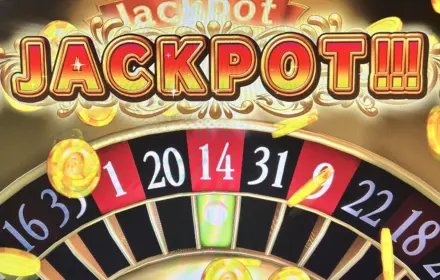Understanding how gambling games originated begins with analyzing roulette. Its visual image, a spinning wheel, symbolizes cyclicity and fate. Initially established in France as entertainment for nobles, roulette quickly became a popular attraction.
With the opening of the first licensed halls in the second half of the 19th century, the process began to be systematized: fixed bets, regulated payouts, standardized rules. Thus, roulette transitioned from a random pastime to a format where a stable business model emerged.

### Poker and the Formation of a Professional Community
The mechanics of poker proved to be highly adaptable to commercialization. Already in the 19th century, tournaments with cash prizes were held in the USA, and stable venues for sessions were established.
Card clubs became the foundation for the emergence of professional players, ranking systems, and paid training programs. Historians emphasize that in tracing the origins of gambling games, it is important to highlight the moment when participation in card sessions ceased to be just entertainment and turned into a source of income.
### How Gambling Games Originated: When Did the Format Become an Industry?
Analyzing the transition from entertainment to organized business, it is necessary to consider not only popularity but also the infrastructure that allowed forms with an element of risk to evolve into a full-fledged industry.
Starting from the 19th century, casinos became objects of investment, licensing, and taxation. Permanent staff, advertising budgets, and service standards emerged. The question of how gambling games originated, in this context, is revealed not only through culture but also through economics.
### Blackjack and Standardization of Rules
Emerging as a variation of European card formats, blackjack gained popularity due to its simplicity and the ability to influence outcomes through mathematics. Its widespread adoption in casinos in the 20th century was accompanied by strict standardization: rules of dealing cards, payouts, dealer behavior.
Blackjack became a part of the industry because it allowed for predictably regulating revenues for both establishments and participants.
### Slots and Automation of Entertainment
The appearance of the first slot machines in the USA marked a new stage – a transition from table games to mechanized ones. Devices that did not require a dealer’s presence provided round-the-clock activity, benefiting operators.
Over time, slots became the main source of revenue for most establishments. Their visual appeal, mechanical simplicity, and high speed of gameplay turned them into the primary financial engine. From the perspective of casino history, the question of how gambling games originated, automation became a pivotal moment in the industry’s development.
### Economic Signs of Transforming Early Gambling Games in the Ancient World into an Industry
The transition from a cultural phenomenon to an organized industry was accompanied by the formation of specific characteristics. Below are the key signs confirming the transition:
– Introduction of licensing and regulation by the state;
– Formation of business models involving employees, accounting, and marketing;
– Stable demand, predictable flow of customers and revenue;
– Standardization of conditions and software for process automation;
– Involvement of banks and investors interested in industry profits.
These aspects demonstrate how gambling games originated, capable of not only entertaining but also consistently generating income.
### Cards as a Universal Format for Industrialization
Card games, including mahjong and keno, demonstrated high adaptability to commercial structures. They did not require expensive equipment but allowed for managing the process through bets and a limited number of participants.
National characteristics played a special role: in Asia, mahjong became part of the cultural and financial system, while in the USA, cards were used in private and public formats. All this highlights how gambling games originated, capable of integrating into any economic environment.
### Dice and Pre-Industrialization
Dice-based formats are among the oldest, yet industrialization reached them later. In the 20th century, through the systematization of betting conditions, they became part of the table disciplines in casinos.
Types of bets expanded, new calculation rules were introduced. Dice found their place alongside roulette and blackjack.
### Lottery as a Model of State Control
Lottery draws have been used for centuries as a means of tax collection or population stimulation. States quickly realized the economic benefits, established rules, tax rates, and introduced licensing.
National lotteries became part of budgetary systems. They clearly illustrate how gambling games originated, under control and used to implement economic policies.
### Archaeology and Cultural Precursors of the Industry
Excavations in Egypt, Mesopotamia, Rome, and Greece confirm that forms with an element of risk have been used for millennia. However, the formal industry emerged only when three factors were present: stable demand, centralized management, and monetization possibilities.
Archaeological finds – tokens, boards, counting tools – confirm the existence of primitive forms, but the question of how gambling games originated finds completion only at the moment of commercial systematization.
### Signs of Completed Transition to an Industry
The formation of the industry as a full-fledged sphere occurred when certain conditions were met. The main ones are listed below:
– Presence of official operators with licenses and reporting;
– Implementation of automation and software control;
– Stable labor market: dealers, managers, technical specialists;
– Transnational nature of the business and its digitalization;
– Integration into tourism and entertainment infrastructure.
These signs show how gambling games originated, finally established as part of the global economy.

### Conclusion
The journey from lotteries on the streets of ancient Rome to an industry with billion-dollar turnovers shows how gambling games originated and when they ceased to be part of rituals, becoming part of the global economy.
Just as in ancient times when pharaohs, emperors, or Zeus became heroes associated with destiny and victory, modern tote boards and casinos continue to rely on images derived from the depths of human mythology. Each new format is enriched with its own legend, turning chance into a part of the cultural code!
 en
en  de
de  ar
ar  es
es  nl
nl  hi
hi  fr
fr  it
it  pt
pt  el
el 










